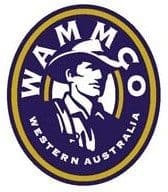THE modest level of engagement in producer-owned cooperative enterprises along the red meat production chain was highlighted in a recent report produced by the Australian Business Council of Cooperatives and Mutuals (BCCM).
Worldwide, agribusiness and insurance sectors are the largest industries for cooperative and mutual business models, but agriculture is relatively poorly represented in a list of the 100 largest co-operative and mutual enterprises (CMEs) in Australia.
This, the third annual report issued by BCCM, aimed to map the size, composition and overall health of the CME sector. Its purpose was to provide a better understanding of these businesses and their contribution to the national economy. Research for the report was provided by the University of Western Australia.
The top 100 list was dominated by member-owned companies across the financial, superannuation, health insurance, retail and motoring sectors. The ‘other’ sector, including agriculture, also contained housing, community, marketing, professional and purchasing services.
The greatest representation in the agriculture space within the top 100 was from the dairy and horticulture sectors.
Just two Australian red meat sector companies were identified in the list of the Top 100 CMEs, ranked by turnover for the 2014-15 year.
 Producer-owned beef, veal and pork processor Northern Cooperative Meat Co, based at Casino, NSW ranked 27th on the list, with turnover for the 2014-15 year of $301 million; pre-tax earnings of $23.4 million; net profit after tax of $17.9 million and total assets of $134.4 million.
Producer-owned beef, veal and pork processor Northern Cooperative Meat Co, based at Casino, NSW ranked 27th on the list, with turnover for the 2014-15 year of $301 million; pre-tax earnings of $23.4 million; net profit after tax of $17.9 million and total assets of $134.4 million.
Click here to view Beef Central’s recent report on NCMC’s 2015-16 annual general meeting.
 Right next to NCMC in position 28 was sheep meat processor, WA Meat Marketing Cooperative Ltd (WAMMCo), with turnover of $286.7 million; pre-tax earnings of $6.9 net profit after tax of $6.1m and total assets worth $83.8m. In 2011 WAMMCo expanded its operations from Katanning, WA, signing a management agreement with Southern Meats Pty Ltd in Goulburn, NSW to manage and operate its sheep and lamb processing plant.
Right next to NCMC in position 28 was sheep meat processor, WA Meat Marketing Cooperative Ltd (WAMMCo), with turnover of $286.7 million; pre-tax earnings of $6.9 net profit after tax of $6.1m and total assets worth $83.8m. In 2011 WAMMCo expanded its operations from Katanning, WA, signing a management agreement with Southern Meats Pty Ltd in Goulburn, NSW to manage and operate its sheep and lamb processing plant.
Ranking number one on the list of Australian CMEs by turnover was Western Australian grower-owned grain handler, CBH Group, with turnover in 2014-15 of $3.72 billion. On a global scale, CBH ranks only number 147 in turnover size, however.
Ranked second overall was Murray Goulburn Cooperative, with turnover of $2.87 billion.
Here’s a brief summary of other agriculture/primary industry cooperatives, their positions on the list, and turnovers:
- 13: Norco Co-operative Ltd ($510m)
- 15: Namoi Cotton Co-operative Ltd ($422m)
- 22: Geraldton Fishermen’s Co-operative Ltd ($360m)
- 35: AlmondCo Ltd ($200m)
- 44: Dairy Farmers Milk Co-operative Ltd ($140m)
- 56: NSW Sugar Milling Co-operative ($87m)
- 66: Oz-Group Co-op (blueberries) ($65.6m)
- 70: Macadamia Processing Co Ltd ($59m)
- 73: Yenda Producers Cooperative ($57m)
- 76: CCW Cooperative, SA ($55m)
- 77: Master Butchers Co-op SA ($53m)
- 83: Lenswood Cold Stores Co-op ($44m)
- 86: Batlow Fruit Co-op ($38m)
- 100: Terang & District Co-op (dairy services) ($22m)
Click here to access the full report.
In terms of geographic spread, NSW was best represented in all co-op structures, with 32pc of the total by turnover, followed by WA and Victoria with 27pc. Queensland represented just 8pc, and SA 5pc.
Sector poorly understood
Business Council of Cooperatives and Mutuals chief executive Melina Morrison said despite representing some of the largest businesses in their sectors and being found across a wide-range of industries, the overall size, structure and contribution of the CME sector in Australia remained relatively poorly understood.
However the CME sector was now being given greater recognition by state and federal governments, which could only benefit the sector and the Australian community more widely.
Lack of understanding was due to a paucity of reliable data, difficulties in definition and vagueness over which firms should be identified as CMEs, she said.
To address these issues the development of an Australian Co-operative and Mutual Enterprise Index (ACMEI) had started. This aims to provide data and analysis of the size and shape of the CME sector. In 2016 it has focused on the identification of the Top 100 co-operative and mutual enterprises in Australia to inform the peak body representing the sector, the BCCM.
Ms Morrison said over the past year, recognition of the importance of CMEs in the Australian economy had improved significantly due to the Federal Senate inquiry into “cooperative, mutual and member owned firms” and the 17 clear recommendations the Senate Economics References Committee provided for government to ensure a level playing field for CMEs.
Likewise, the Federal government’s $14.9 million Farm Co-operatives and Collaboration Pilot Program to provide farmers with knowledge and advice on co-operatives, collective bargaining and other forms of collaboration was a significant boost to the sector.
In terms of financial performance, annual turnover for Australian CMEs rose strongly last financial year, across all sectors, as did profitability. More robust mapping has revealed the depth and breadth of ownership patterns, with a startling 29 million active memberships of Australian CMEs of all types identified in the report.



HAVE YOUR SAY